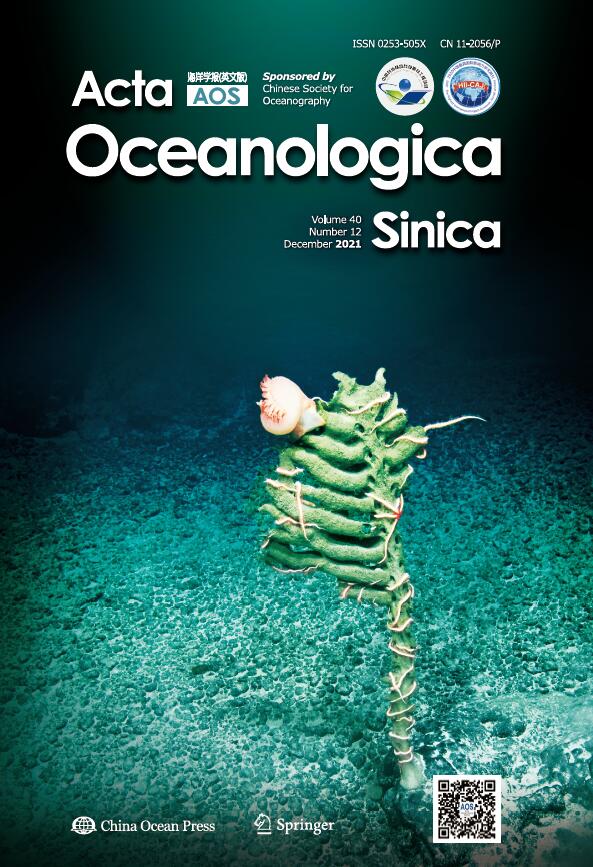| Family | Species name | Origin | Voucher | Accession number | Reference | |||
| 18S rDNA | 28S rDNA | 16S rDNA | cox1 gene | |||||
| Polynoidae | Abyssarya acus | Clarion-Clipperton Fracture Zone | MNHN-IA- TYPE 1811 | MH233231 | – | MH233179 | MH233277 | Bonifácio and Menot (2019) |
| Acholoe squamosa | France | SMNH118959 | AY839567 | JN852850 | JN852888 | AY839576 | Norlinder et al. (2012) | |
| Alentia gelatinosa | Trondheimsfjord, Norway | – | AY839566 | – | – | AY839577 | Gonzalez et al. (2018) | |
| Alentiana palinpoda | Pacific Ocean | B6317500003 | MW397195 | MW405100 | MW397208 | MW374288 | this study | |
| Antarctinoe ferox | Ross Sea | – | KF713423 | – | KF713463 | KF713373 | Gonzalez et al. (2018) | |
| Bathyedithia retierei | Clarion-Clipperton Fracture Zone | MNHN-IA- TYPE 1814 | MH233215 | – | MH233157 | – | Bonifácio and Menot (2019) | |
| Bathyeliasona mariaae | Clarion-Clipperton Fracture Zone | MNHN-IA- TYPE 1815 | MH233204 | – | MH233149 | MH233249 | Bonifácio and Menot (2019) | |
| Bathyfauvelia glacigena | Clarion-Clipperton Fracture Zone | MNHN-IA- TYPE 1817 | MH233218 | – | MH233160 | MH233274 | Bonifácio and Menot (2019) | |
| Bathyfauvelia ignigena | Clarion-Clipperton Fracture Zone | MNHN-IA- TYPE 1819 | MH233246 | – | MH233200 | MH233262 | Bonifácio and Menot (2019) | |
| Bathymoorea lucasi | Clarion-Clipperton Fracture Zone | MNHN-IA- TYPE 1822 | MH233223 | – | MH233165 | MH233266 | Bonifácio and Menot (2019) | |
| Bathypolaria sp. 173 | Clarion-Clipperton Fracture Zone | MNHN-IA- PNT 63 | MH233206 | – | MH233151 | MH233281 | Bonifácio and Menot (2019) | |
| Branchinotogluma bipapillata | Southwest Indian Ridge | RSIO3530 | MH717079 | – | MH717078 | MH202755 | Zhou et al. (2018) | |
| Branchinotogluma elytropapillata | Okinawa Trough | NSMT-Pol P-668 | MG799378 | MG799380 | MG799377 | MG799387 | Zhang et al. (2018a) | |
| Branchinotogluma ovata | Manus Back-Arc Basin | MBM286062-sps2 | MK211411 | MK211413 | MK211416 | MK357896 | Wu et al. (2019) | |
| Branchinotogluma sandersi | Juan de Fuca Ridge | SMNH118960 | JN852821 | JN852851 | JN852889 | JN852923 | Norlinder et al. (2012) | |
| Branchinotogluma segonzaci | Manus Back-Arc Basin | MBM286042 | MK211412 | – | MK211418 | MK357906 | Wu et al. (2019) | |
| Branchinotogluma trifurcus | Manus Back-Arc Basin | MBM286046 | MK211410 | – | MK211415 | MK357905 | Wu et al. (2019) | |
| Branchipolynoe longqiensis | Longqi field, Southwest Indian Ocean Ridge | – | KY753847 | KY753847 | KY753826 | KY753826 | Zhang et al. (2018b) | |
| Branchipolynoe pettiboneae | Seep, South China Sea | – | KY753840 | KY753840 | KY753825 | KY753825 | Zhang et al. (2018b) | |
| Bruunilla nealae | Clarion-Clipperton Fracture Zone | MNHN-IA- TYPE 1824 | MH233216 | – | MH233158 | – | Bonifácio and Menot (2019) | |
| Bylgides elegans | Sweden | SMNH118962 | JN852822 | JN852852 | JN852890 | JN852924 | Norlinder et al. (2012) | |
| Bylgides sarsi | Sweden | SMNH118961 | JN852823 | JN852853 | JN852891 | JN852925 | Norlinder et al. (2012) | |
| Capitulatinoe cf. cupisetis | Clarion-Clipperton Fracture Zone | – | KF919301 | – | KF919303 | – | Bonifácio and Menot (2019) | |
| Eunoe nodosa | Norway | SMNH118963 | JN852824 | JN852854 | JN852892 | JN852926 | Norlinder et al. (2012) | |
| Gastrolepidia clavigera | Papua New Guinea | SMNH118964 | JN852825 | JN852855 | JN852893 | JN852927 | Norlinder et al. (2012) | |
| Gattyana ciliata | San Juan Channel, WA | USNM1077218 | AY894297 | DQ790035 | AY894312 | Gonzalez et al. (2018) | ||
| Gattyana cirrhosa | Sweden | SMNH118965 | JN852826 | JN852856 | JN852894 | JN852928 | Norlinder et al. (2012) | |
| Gesiella jameensis | Lanzarote, Canary Islands | – | KY454403 | KY823476 | KY454412 | KY454429 | Gonzalez et al. (2018) | |
| Halosydna brevisetosa | California | SMNH118966 | JN852827 | JN852857 | JN852895 | AY894313 | Norlinder et al. (2012) | |
| Halosydnella australis | Baia de Paranagua, Pontal do Sul, Brazil | – | KY823449 | KY823463 | KY823480 | KY823495 | Gonzalez et al. (2018) | |
| Harmothoe glabra | England | SMNH118967 | JN852828 | JN852858 | JN852896 | JN852929 | Norlinder et al. (2012) | |
| Harmothoe imbricata | Bohuslan, Sweden | – | AY340434 | AY340400 | AY340463 | AY839580 | Gonzalez et al. (2018) | |
| Harmothoe impar | Sweden | SMNH118968 | JN852829 | JN852859 | JN852897 | JN852930 | Norlinder et al. (2012) | |
| Harmothoe oculinarum | Norway | SMNH118969 | AY894299 | JN852860 | JN852898 | AY894314 | Norlinder et al. (2012) | |
| Harmothoe rarispina | Disko Island, Greenland | – | KY657611 | KY657624 | KY657641 | KY657659 | Gonzalez et al. (2018) | |
| Hermenia verruculosa | Belize | SMNH118970 | JN852830 | JN852861 | JN852899 | JN852931 | Norlinder et al. (2012) | |
| Hodor anduril | Clarion-Clipperton Fracture Zone | MNHN-IA- TYPE 1826 | MH233240 | – | MH233191 | MH233288 | Bonifácio and Menot (2019) | |
| Hodor hodor | Clarion-Clipperton Fracture Zone | MNHN-IA- TYPE 1825 | MH233238 | – | MH233189 | MH233257 | Bonifácio and Menot (2019) | |
| Hyperhalosydna striata | Japan | SMNH118971 | JN852831 | JN852862 | JN852900 | JN852932 | Norlinder et al. (2012) | |
| Intoshella dictyaulus | near Mariana Trench | MBM 304568 | MG519807 | – | – | MG519808 | Sui et al. (2019) | |
| Lepidasthenia elegans | France | SMNH118973 | JN852832 | JN852863 | JN852901 | JN852933 | Norlinder et al. (2012) | |
| Lepidonotus clava | England | SMNH118974 | JN852833 | JN852864 | JN852902 | JN852934 | Norlinder et al. (2012) | |
| Lepidonotus squamatus | Sweden | SMNH118975 | AY176290 | JN852865 | JN852903 | AY894316 | Norlinder et al. (2012) | |
| Lepidonotus sublevis | Munlo Cove, Griffin Bay, WA | USNM107222 | AY894301 | DQ790039 | – | AY894317 | Gonzalez et al. (2018) | |
| Levensteiniella undomarginata | Okinawa Trough | CBM-ZW 1118 | MG799379 | MG799381 | MG799376 | MG799385 | Zhang et al. (2018a) | |
| Macellicephala clarionensis | Clarion-Clipperton Fracture Zone | MNHN-IA- TYPE 1828 | MH233233 | – | MH233183 | MH233269 | Bonifácio and Menot (2019) | |
| Macellicephala parvafauces | Clarion-Clipperton Fracture Zone | MNHN-IA- TYPE 1831 | MH233210 | – | MH233153 | MH233282 | Bonifácio and Menot (2019) | |
| Macellicephaloides moustachu | Clarion-Clipperton Fracture Zone | MNHN-IA- TYPE 1832 | MH233212 | – | – | – | Bonifácio and Menot (2019) | |
| Malmgreniella mcintoshi | Sweden | SMNH118976 | JN852834 | JN852866 | JN852904 | JN852935 | Norlinder et al. (2012) | |
| Melaenis loveni | Svalbard | SMNH118977 | JN852835 | JN852867 | JN852905 | JN852936 | Norlinder et al. (2012) | |
| Neopolynoe paradoxa | Norway | SMNH118978 | JN852836 | JN852868 | JN852906 | JN852937 | Norlinder et al. (2012) | |
| Nu aakhu | Clarion-Clipperton Fracture Zone | MNHN-IA- TYPE 1836 | MH233209 | – | – | – | Bonifácio and Menot (2019) | |
| Paradyte crinoidicola | Papua New Guinea | SMNH118979 | JN852837 | JN852869 | JN852907 | JN852938 | Gonzalez et al. (2018) | |
| Paralepidonotus ampulliferus | Papua New Guinea | SMNH118980 | JN852838 | AF185164 | JN852908 | JN852939 | Gonzalez et al. (2018) | |
| Pelagomacellicephala cf. iliffei | Eleuthera, Bahamas | ZMUC-POL-2394 | KY454408 | KY823474 | KY454420 | KY454435 | Gonzalez et al. (2018) | |
| Polaruschakov lamellae | Clarion-Clipperton Fracture Zone | MNHN-IA- TYPE 1837 | MH233205 | – | MH233150 | MH233250 | Bonifácio and Menot (2019) | |
| Polynoe scolopendrina | England | SMNH118981 | JN852839 | JN852870 | JN852909 | JN852940 | Norlinder et al. (2012) | |
| Thormora jukesii | Japan | SMNH118983 | JN852840 | JN852871 | JN852910 | JN852941 | Norlinder et al. (2012) | |
| Yodanoe desbruyeresi | Clarion-Clipperton Fracture Zone | MNHN-IA- TYPE 1843 | – | – | MH233156 | MH233251 | Bonifácio and Menot (2019) | |
| Outgroup | ||||||||
| Sigalionidae | Neoleanira tetragona | Sweden | SMNH118984 | AY839570 | JN852872 | JN852911 | AY839582 | Norlinder et al. (2012) |
| Psammolyce sp. EN 2012 | Belize | SMNH118989 | JN852843 | JN852877 | JN852916 | – | Norlinder et al. (2012) | |
| Sigalion spinosus | – | – | AY894304 | DQ790062 | – | AY894319 | Norlinder et al. (2012) | |
| Iphionidae | Iphione sp. | Papua New Guinea | SMNH118972 | JN852819 | – | JN852886 | JN852921 | Norlinder et al. (2012) |
| Thermiphione sp. EN 2012 | Fiji, Lau Basin | SMNH118982 | JN852820 | JN852849 | JN852887 | JN852922 | Norlinder et al. (2012) | |
| Chrysopetalidae | Chloeia flava | Japan | SMNH95025 | EF076780 | EF076781 | JN852917 | JN852944 | Norlinder et al. (2012) |
| Euphrosinidae | Euphrosine foliosa | Banyuls, | SMNH95028 | EF076784 | EF076785 | JN852918 | JN852945 | Norlinder et al. (2012) |
| Mexieulepis weberi | Belize | SMNH118958 | JN852818 | – | JN852885 | JN852920 | Norlinder et al. (2012) | |
| Nereididae | Nereis pelagica | Sweden, paragenophore | SMNH118992 | AF474279 | AY612636 | AY340470 | JN852947 | Norlinder et al. (2012) |
| Syllidae | Eusyllis blomstrandi | Sweden, paragenophore | SMNH118994 | EF123887 | JN852880 | EF123788 | EF123749 | Norlinder et al. (2012) |
| Glyceridae | Glycera alba | Sweden, paragenophore | SMNH118991 | AY176287 | DQ779689 | DQ779615 | JN852946 | Norlinder et al. (2012) |
| Aphroditidae | Aphrodita aculeata | Sweden | SMNH118956 | AY176281 | JN852846 | JN852882 | AY839578 | Norlinder et al. (2012) |
| Laetmonice filicornis | Sweden | SMNH118955 | JN852816 | JN852847 | JN852883 | JN852919 | Norlinder et al. (2012) | |
| Pholoidae | Pholoe baltica | Sweden | SMNH118985 | AY839573 | JN852873 | JN852912 | AY839585 | Norlinder et al. (2012) |
| Pholoe pallida | Sweden | SMNH118986 | AY894302 | JN852874 | JN852913 | AY894318 | Norlinder et al. (2012) | |
| Pisione remota | – | – | AY525628 | – | – | AF221575 | Norlinder et al. (2012) | |
| Pisionidens sp. | Mexico | SMNH118988 | JN852842 | JN852876 | JN852915 | JN852943 | Norlinder et al. (2012) | |
| Note: – means the data had not reported in the database. | ||||||||




 DownLoad:
DownLoad:

 DownLoad:
DownLoad:








 DownLoad:
DownLoad:

